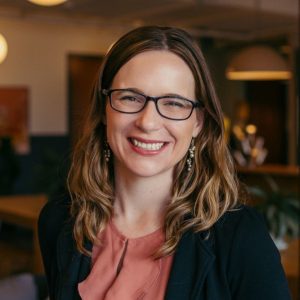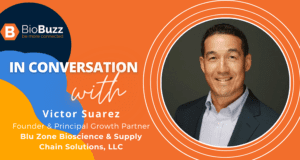
This Baltimore Non-profit Is Redefining What It Means to Be a Mentor
Started in 2000, Building STEPS is ensuring that Baltimore City students unlock their full potential
By Sarah Ellinwood
March 28, 2023
Did you know that there have been studies correlating your childhood zip code with how successful you’re likely to be? While we like to think that everyone in this country has what it takes to be successful, the chances are much lower if you’re given a poor hand of cards to begin with. We’ve heard all the time how Baltimore City students fair poorly compared to other districts and counties. While Montgomery and Howard County have topped the list for best schools in the nation, Baltimore City continuously falls below average.
Debra Hettleman and her team are looking to change that.
Building STEPS was started in 1995 when Debra Hettleman’s brother-in-law Matthew Weinberg, a scientific consultant in DC, wanted to boost diversity in his workplace. He went into the DC school system with the goal of starting a program where he could bring underrepresented students to intern at his business, giving them a taste of what a STEM career can entail. They’d learn and get excited about the field, and he would help them get into college with the hopes that they would work in the sciences.
“He did this for many years, and we’d have conversations about growing the nonprofit and expanding services. After five years of operating Building STEPS in DC, Matthew moved the nonprofit to Baltimore, where there are a breadth of institutional, corporate and philanthropic partnership opportunities,” Hettleman said.
Building STEPS launched in Baltimore as a two-year high school program, where students spend their junior year visiting companies to expose them to STEM careers, the summer working in an internship, and their senior year learning more about colleges and completing college and financial aid applications.
“After two years of programming I called Matthew to share good news and bad news. The good news was that we had 15 out of 16 students accepted to college. The bad news, which wasn’t actually a bad thing at all, was that we now had to expand programming to continue supporting our students. We can’t just launch them into college and say ‘See you later, hope it works out for you!’”
Two decades later, the program currently partners with 15 public Baltimore City high schools to seek out high-achieving sophomores. “Those are the students we focus on because everyone assumes that if students are earning A’s and B’s, they’ll probably be fine,” said Hettleman. “But they’re NOT fine – they don’t know what a science career can look like. They don’t know how to find internships or how to explore their options.”
And even though Building STEPS accepts students with a 3.0 GPA, this isn’t possible in every school. Some schools, in fact, don’t have any students with a 3.0. “If your highest achieving student has a 2.65 GPA, we are going to take that student. We’re going to do everything we can to help that student, because chances are that student will be highly successful if given the right resources.”
Once accepted into the program, students officially begin in the fall of their junior year, attending monthly trips to tour life science, technology and engineering companies in Baltimore and beyond, giving them a first-hand glimpse into what they can achieve with a STEM degree. After the school year ends, the now-rising seniors participate in paid summer internships and attend workshops to help them build soft skills. During senior year, they learn how to identify which schools will best serve them, apply for college and financial aid, and prepare for their first year on a college campus.
And the results speak for themselves – nearly 80% of students who are in the program earn a college degree – an amazing number considering only about 8% of high schoolers in Baltimore City finish college and earn a degree.
“Most Building STEPS students are the first in their family to earn a college degree,” said Hettleman. “They don’t have someone who has been through it who can help them with the application and financial aid processes. College access is complicated and sometimes students aren’t sure of the help they need.”
Skills across the entire spectrum
As many of us know, just because you know that mitochondria is the powerhouse of the cell doesn’t mean that you know how to balance a checkbook. In addition to helping build STEM skills, the Building STEPS team also makes it a priority to build life skills.
“We bring in guest speakers from our community frequently, all with different expertise. One day we did a lab with Learning Undefeated, where our kids learned about brain injury and concussions. And just recently had a workshop where we had a banker explain budgeting through an interactive budgeting activity.”
Mentorship that lasts a lifetime
While Building STEPS is not the only organization that provides these kind of services, the thing that makes this organization truly special is that they continue to support students beyond just high school. They ensure that students have the tools and support they need to not only make it through, but be able to nab a job that pays a truly livable wage.
“We support our college students in everything from helping them develop study skills, finding tutors, bouncing back from a low grade to navigating roommate issues, figuring out time management, and managing a new social environment,” Hettleman noted.
“We have a dedicated person on our team where that’s all she does – she connects with students, talks to them, and has coffee with them to see how they’re really doing, because we all know that just because someone says they’re fine, it doesn’t mean that they’re actually fine.”
Another hurdle Building STEPS helps students overcome is how to still be in the sciences even if they don’t do well in what are often considered the “weed-out” classes, such as calculus and organic chemistry.
“Students hope and dream of being in science when they get to college, only to have their dreams crushed because they got a D in Organic Chemistry. We help students shake themselves out of this mentality and explore other options that could be just as rewarding. For example, you might not be best suited to become a hardcore researcher, but there are options out there in the healthcare space that aren’t as math-heavy,” Hettleman noted.
And if you think Building STEPS is done after you walk across that university stage, you’re wrong. After finishing college the team continues to stay in touch, offering events, networking opportunities, and services to help these newly-minted early-career professionals write resumes, find jobs, network, and continue to develop their careers.
And those connections won’t be waning anytime soon.
“Just a few weeks ago I dropped off a baby gift to an alum who graduated from our program about 10 years ago. That’s what we mean when we say we’re in it for the long haul,” said Hettleman. “And when you have these deep connections, students want to come back and pay it forward. They want to mentor the up-and-coming class and reflect back how they used to be in, quite literally, the exact same chairs.”
Changing the narrative
Toward the end of our time together, we asked Hettleman her thoughts on what has changed in the STEM education space in the last 23 years.
“We’ve seen so much growth with technology. When Building STEPS started, very few students had a cell phone. Now it’s hard for us to disconnect from our phones.”
Interestingly, though, she noted a key thing that has stayed the same, and is something we as a community need to work on.
“We use the term ‘STEM’ all the time – we have to get more kids in STEM, we have to show them what STEM careers are out there, we have to get more STEM volunteers. In my ~22 years of doing this, I’ve realized that this is not a term teens use, and many don’t even know what it actually means. Rather than use the term ‘STEM’ in our presentations, we consciously talk about opportunities in science, technology and engineering; we talk about science without using the word ‘science,’” she said.
“We talk about the activities we’re doing and what we’re learning about. For example, many students pass by the National Aquarium daily – are they interested in learning about how staff take care of and feed the fish? Or where the water comes from? Or what happens if there’s a snowstorm and nobody can get to work? Or, as another example, have you ever thought about how that picture you took is digitally sent to the person sitting next to you? When you frame it like this, you help students explore what truly interests them.”
Interested in getting involved? Building STEPS has numerous ways you can volunteer, from being a tutor to coordinating events and more. Check out how you can become part of the mission to help Baltimore “Be More”.
- About the Author
- Latest Posts
Sarah Ellinwood is BioBuzz’s Managing Editor. A scientist by training and a science communicator at heart, Sarah specializes in making complex concepts understandable, engaging, and exciting. She received her Ph.D. in molecular and cellular biology with a focus in infectious disease immunology from the University of Maryland and is passionate about all things related to scicomm, peer mentorship, and women in STEM.









